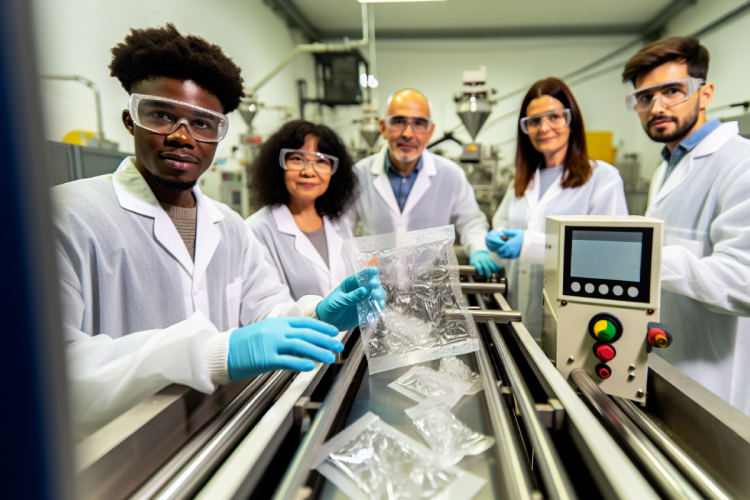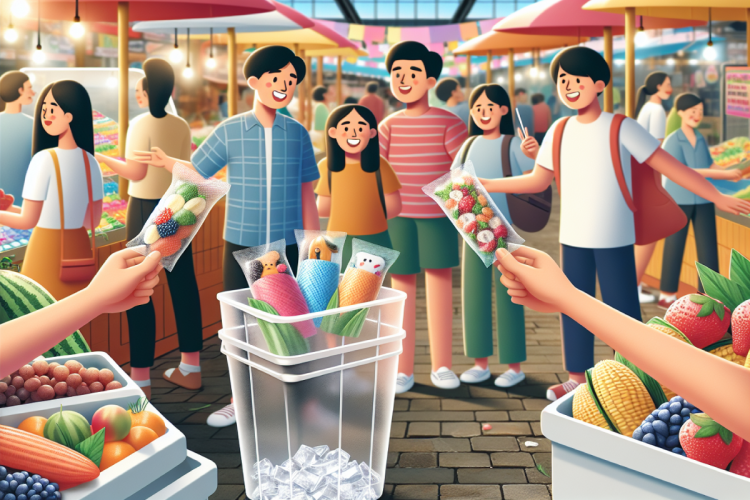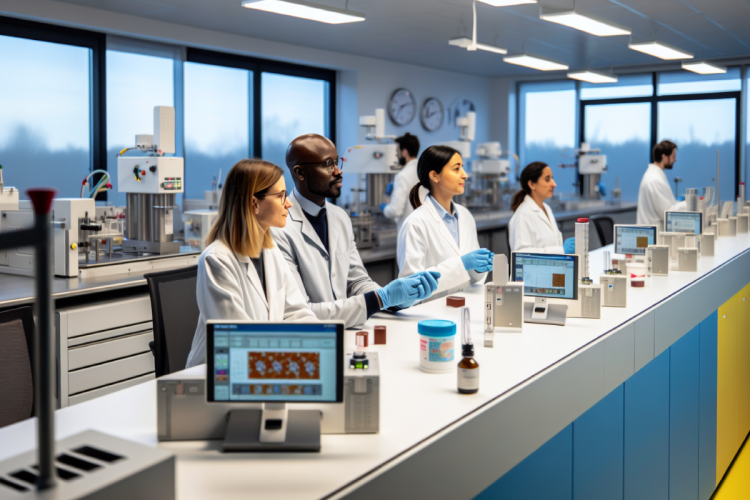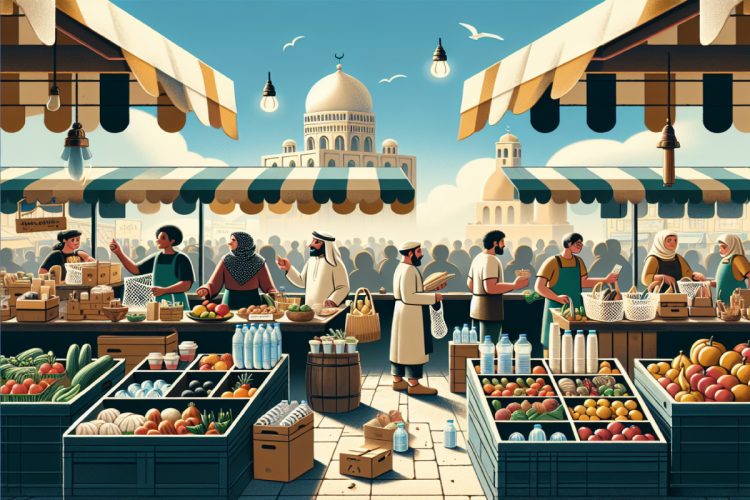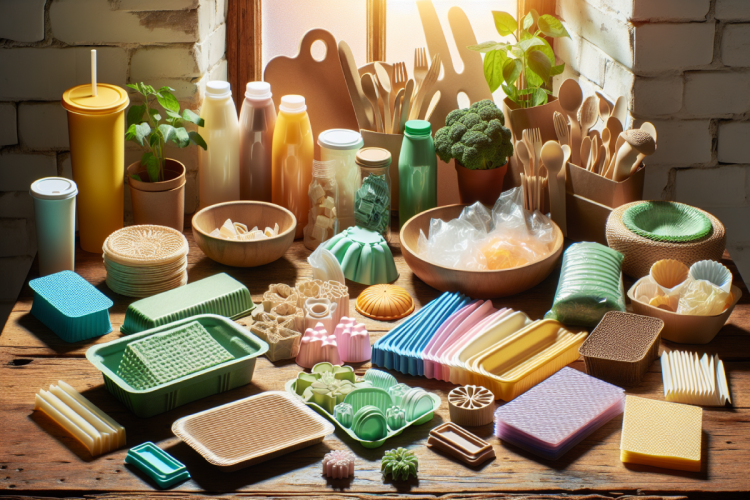Essential trends in sustainable food packaging for a greener future
Discover the crucial changes taking place and why they matter in the pursuit of a greener future.
Why is sustainable food packaging crucial today? We´ll try to cut through the complexity, detailing current strides in reducing packaging waste through bioplastics, plant-based materials, and smart designs.
Food packaging
- The urgency for sustainable food packaging is driven by the environmental impact of single-use plastics and increased consumer demand for sustainable practices, with half of U.S. consumers willing to pay more for such packaging.
- Innovative materials in sustainable packaging, such as bioplastics, edible, and plant-based options, present unique benefits and challenges but collectively contribute towards eco-friendliness, waste reduction, and alignment with a circular economy.
- Advancements in smart packaging technologies, including active and intelligent packaging, enhance food preservation and safety, thereby contributing to reduced food waste and improved environmental sustainability.
The growing need for sustainable food packaging
The food industry, which once heavily relied on plastics and other non-biodegradable materials, is at a critical juncture. The environmental toll of traditional packaging materials is massive, with food containers, particularly those made of plastic, accounting for a significant portion of the waste found in our environment. The industry has experimented with various packaging materials such as:
- metals
- glass
- paper
- polymers
But these have created their own set of environmental issues, including being also waste and pollution.
Today, the necessity of transitioning towards sustainable food packaging practices is underscored by evolving consumer preferences and industry trends. An exploration of the urgent requirement for sustainable food packaging will highlight the issues with single-use plastics and the escalating consumer demand for sustainability.
The problem with single-use plastics
The food packaging industry is the largest consumer of synthetic plastics derived from fossil fuels, and sadly, it’s also the main source of waste plastics entering the environment. Plastics have become the material of choice for food packaging due to their cost-effectiveness and barrier properties. However, a significant portion of these plastics inevitably ends up in the environment, where they may persist for centuries.
These fossil fuel-derived plastics contribute to the formation of microplastics, leading to bioaccumulation in the food chain. Furthermore, it’s sobering to note that nearly half of the total packaging waste by weight and almost two-thirds by volume in solid municipal waste streams are attributed to food packaging. This stark reality underscores the urgent need to address the significant role that single-use plastics in the food industry play in exacerbating the global environmental crisis.
Consumer demand for sustainability
In the face of environmental challenges, consumer attitudes are shifting. While price, quality, and convenience remain important, younger generations and urban dwellers are increasingly considering the environmental impact of their purchases. In fact, about half of U.S. consumers are willing to pay more for sustainable packaging, particularly for products like fresh produce and beverages.
However, the road to sustainable consumerism is not without its bumps. Consumers show limited understanding of which packaging options are sustainable, indicating a gap in knowledge that needs to be addressed. This gap presents an opportunity for companies to develop tailored strategies to cater to specific consumer segments and address recycling issues to succeed in the sustainable packaging market.
Innovative materials in sustainable food packaging
The quest for sustainable food packaging solutions has sparked a wave of innovation that promises to change the face of the food industry. From water-based coatings that increase paper and cardboard recyclability to entirely dissolvable bags made from biodegradable materials, the shift to recyclable and compostable solutions is evident. These innovative approaches are not just confined to the lab; industry-specific applications such as eco-friendly bakery packaging are making their way to our everyday lives, contributing to waste reduction and sustainability.
Subsequent discussions will provide a more profound exploration of innovative materials in sustainable food packaging. They range from bioplastics and edible packaging to plant-based materials, each presenting its unique mix of advantages and challenges.
Bioplastics
Bioplastics are emerging as a promising alternative to conventional plastic packaging. Derived from renewable resources like cornstarch, sugarcane, or algae, these materials are finding their way into various food packaging applications such as:
- biodegradable food packaging bags
- paper cups
- soup containers
- ice cream containers
Despite their potential, biopolymers like PLA face challenges such as high costs, performance drawbacks, and limited biodegradability under non-ideal conditions. However, life-cycle analysis (LCA) of bio-based polymers shows they generally have a reduced environmental impact compared to petroleum-based polymers, with biodegradation processes facilitated by microorganisms like bacteria and fungi.
This balance of benefits and challenges makes bioplastics a fascinating field in the journey towards sustainable food packaging.
Edible packaging
Imagine a world where the packaging of your favorite food item is not only biodegradable but also edible. Welcome to the world of edible packaging, where materials such as carbohydrates, fats, proteins, seaweed, and chitin from shrimp shells provide an edible barrier for food items. Innovations in this space include WikiPearls™ with edible gel skin, smoothie packages that wither as you drink, and edible cups made by Loliware.
Companies like Xampla, Notpla, and LOLIWARE are leading the way, offering products like soluble wrappers, ooho edible containers, and seaweed-based cups respectively. The development of edible packaging, such as water-soluble films, helps significantly reduce packaging waste by leaving no residue behind.
Plant-based packaging
Plant-based packaging is another innovative approach to sustainable food packaging. Materials like cellulose from wood pulp, sugarcane bagasse from residue, corrugated cardboard, and biodegradable substances derived from seaweed and coconuts serve as eco-friendly alternatives to conventional packaging material.
One notable example is mushroom mycelium packaging, a material grown from fungi roots that not only resembles synthetic foam plastics but is also fully compostable within 45 days. Companies such as Ecovative use mycelium to create environmentally friendly packing materials, while others like AEROPOWDER innovate with feather-based insulating materials aimed at replacing polystyrene.
The development of plant-based packaging aims to lessen environmental impact by creating lightweight, biodegradable materials that reduce both waste and transportation costs.
Reducing food waste through smart packaging
Food waste is a worldwide concern, with food packaging technology playing a pivotal role in mitigating this issue. By extending shelf life and monitoring food quality, this packaging technology facilitates significant waste reduction and helps to store food more efficiently.
Active packaging technologies enhance shelf life by interacting with the food or its environment to slow deterioration. Alongside this, intelligent packaging systems use indicators to monitor inside and outside food environments, tracking temperature, pH, and other factors critical to food quality. These advancements are not just theoretical; companies like Apeel Sciences have developed an edible plant-based solution that extends the shelf life of produce, directly countering the issue of food waste.
Active packaging
Active packaging technology presents a dynamic approach to preserving food quality. It enhances the performance of food packaging systems by incorporating subsidiary constituents that can manage the package’s internal environment. Active packaging components, such as copper-based LDPE films and various biopolymer-based packaging solutions, serve to reduce spoilage and prolong the shelf-life of foods.
The most commercially significant active packaging elements are oxygen scavengers and moisture absorbers, which have a substantial impact on extending the storage life of food products. These systems operate by releasing or absorbing compounds that can inhibit lipid oxidation, microbial contamination, and moisture loss, all factors that accelerate food spoilage and degradation.
The adoption and success of active packaging technology in the market rely on its capability to meet real-world demands, prioritizing practical applications over theoretical technological advancements.
Intelligent packaging
Intelligent Packaging (IP) marks a new era in food packaging. By integrating target-specific sensors, indicators, and radiofrequency identification (RFID) systems into packaging, IP systems can track and convey information regarding food quality attributes like freshness directly to consumers. These systems help protect food quality by:
- Showing if products have been exposed to harmful temperatures
- Detecting spoilage-related changes in package gas composition
- Responding visibly to changes in pH or gas
This provides consumers with straightforward cues about product quality.
Moreover, connected packaging using the internet and smartphones promotes consumer interaction, offering product information that can boost proper usage and waste reduction. Intelligent packaging thus enhances food safety management by contributing to the improvement of systems such as Hazard Analysis and Critical Control Points (HACCP) and Quality Analysis and Critical Control Points (QACCP).
Circular economy and food packaging
The introduction of a circular economy is revolutionizing our perspective on waste and resource utilization in food packaging. The objective of a circular economy is waste minimization and optimal resource utilization by ensuring the design of fully recyclable or biodegradable packaging. This approach to food packaging considers the entire lifecycle from:
- raw material acquisition
- production
- usage
- end-of-life disposal
It focuses on reducing environmental impact at each stage.
As we move towards a more sustainable future, a circular economy approach to food packaging prioritizes:
- Materials that are recyclable
- Materials that are sourced from sustainable streams, such as recycled content
- Materials that are derived from renewable resources
Realizing the principles of the circular economy in food packaging requires developing systems that allow for the continuous cycling of packaging materials back into the economy, thus preventing them from becoming waste.
Design for recyclability
Designing for recyclability is a critical aspect of the circular economy approach to food packaging. Clear and mono-material plastics are preferred in food packaging design for recyclability as these are easier to sort and recycle. However, the challenge lies in avoiding materials that hinder the recycling process, like black plastics that elude detection in sorting facilities and certain adhesives that contaminate recycling streams.
Minimalist packaging designs are promoted to:
- Cut back on the use of materials that are difficult to recycle such as metallic inks or non-detachable labels, thereby streamlining the recycling process of primary packaging and secondary packaging
- Use plant-based packaging that is designed for disassembly, enabling straightforward recycling or composting
- Advance towards a more circular economy
Zero-waste packaging solutions
Zero-waste packaging solutions are a key component of the circular economy. These solutions offer a range of reusable, recyclable, and biodegradable options, such as glass containers that can be reused or recycled, and thin metal containers coated in aluminum that are highly recyclable and can be recycled indefinitely without compromising quality.
Innovative materials such as bamboo and rice husk have also emerged as biodegradable and renewable materials suitable for zero-waste packaging, mainly for reusable products. Even bioplastics are increasingly produced for food packaging, with a significant share used in the packaging sector.
Companies like SwapBox and LivingPackets are leading the way in providing reusable food packages for the food and beverage industry and e-commerce, respectively, further reducing packaging waste with the help of innovative packaging machines. These companies also focus on minimizing the use of secondary packages, contributing to a more sustainable packaging approach.
Regulatory frameworks and industry standards
As the food packaging industry advances towards sustainability, regulatory frameworks and industry standards hold a pivotal role in safeguarding the safety and sustainability of food packaging materials. Different jurisdictions have diverse approaches to regulating food packaging, which influences the data needed for substance clearance in packaging materials. In the U.S., substances that might migrate to food from packaging are treated as food additives, though exceptions exist for certain materials.
On the other hand, the EU mandates comprehensive toxicological evaluations for food packaging materials, maintaining a positive list of sanctioned substances and setting migration limits for food contact plastics. These regulations, rooted in agricultural and food chemistry, are designed to ensure the physical, chemical, and sanitary integrity of food, preventing the transfer of harmful substances from packaging into food.
Food safety regulations
Food safety regulations play a crucial role in governing the use of new packaging materials. In the EU, the Framework Regulation sets safety standards for all food contacts materials, while the FDA in the United States provides guidance for recycled plastics in food packaging. The U.S. requires the Food Additive Petition Process for new sustainable packaging materials and is moving towards the positive list approach which demands comprehensive evaluations for substance clearance.
The effectiveness of sustainable packaging depends heavily on industry awareness and adherence to guidelines that mitigate potential risks, emphasizing the need for sound regulatory environments. Therefore, to preserve food safety while promoting sustainability, it’s critical that new packaging materials adhere to regulatory guidance and safety standards.
Certification programs
Certification programs serve a vital role in promoting sustainability in the food packaging industry. They help consumers identify sustainably sourced materials and confirm the environmental and social responsibility of the production process. Certified materials in packaging can:
- Enhance brand image
- Reduce business risks
- Potentially improve product margins due to optimized resource use
- Enable the ability to command a premium in the market
The Forest Stewardship Council (FSC) promotes sustainable forest management and offers supply chain and product accreditation for tree-based products, including packaging. Responsible sourcing and certification of plant-based materials, such as FSC and BPI certifications, ensure that the materials are sustainable and ethically sourced.
Successful sustainable food packaging examples
The shift towards sustainable food packaging is not a far-off ambition but a reality already being adopted by numerous companies. The industry is observing an increasing number of success stories, from fast-food chains to innovative startups. These examples not only serve as inspiration but also underscore the feasibility of sustainable food packaging.
Eco-friendly fast food packaging
Fast-food chains are leading by example in the adoption of eco-friendly packaging options. Some examples include:
- Coolhaus, which uses potato starch wrappers for their ice cream sandwiches
- Bob’s in Brazil, which serves burgers in edible paper
- Snack containers made from bamboo or sugarcane, which provide a plant-based, durable, and chemical-free alternative to traditional plastic packaging.
These initiatives are not just limited to edible packaging. Some examples of sustainable packaging options include:
- Biodegradable burger boxes, which maintain food temperature, diminish waste, and incorporate design features like vents to extend shelf life.
- Green gable boxes made from enhanced cardboard, which offer strength, moisture resistance, and are suited for storage or transport, representing an improved sustainability option over traditional cardboard.
- Paper hot dog holders crafted from greaseproof paper, which offer a recyclable solution that reduces waste while keeping consumers’ hands clean during consumption.
Innovative startups in sustainable packaging
The startup scene is buzzing with innovative solutions for sustainable food packaging. Lactips has introduced biodegradable thermoplastic pellets made from casein for packaging options that minimize environmental impact. Paptic has innovated with packaging materials derived from renewable wood fibers, offering an eco-friendly alternative for packaging applications.
Other startups like Sulapac and Ecoplasteam are pushing the boundaries of sustainable packaging with fully biodegradable materials and recycling solutions respectively. Craste’s utilization of agricultural waste to produce packaging and furniture materials showcases the potential of transforming waste into value. These startups symbolize the wave of innovation steering the food packaging industry towards a sustainable future.
About food packages
Throughout this exploration of sustainable food packaging, we’ve delved into the environmental and consumer-driven need for eco-friendly alternatives, the innovative materials shaping the industry, and the smart packaging technologies reducing food waste. We’ve also explored the concept of a circular economy in food packaging, the regulatory frameworks and industry standards governing packaging safety and sustainability, and the vital role of certification programs. Lastly, we’ve seen real-world examples of sustainable food packaging in action, from fast-food chains to innovative startups.
As we conclude, it’s clear that the journey towards sustainable food packaging is not just about embracing new materials or technologies. It’s about shifting mindsets, prioritizing sustainability at every stage of the packaging lifecycle, and creating value from what was once considered waste. The future of food packaging is not just about containing and protecting our food; it’s about preserving our environment, our health, and our future.
What are the 4 types of food packaging?
There are four main types of food packaging: primary, secondary, tertiary, and transit packaging. Each type serves a different purpose in protecting and preserving the food products.
What is the best packaging for food products?
The best packaging for food products is one that prevents contamination and keeps the items fresh for customers, such as plastic, resealable pouches, cardboard, and metal. Choose a packaging material based on the perishability of the food.
What is food packaging meaning?
Food packaging refers to the various wrappings, bags, containers, and utensils used to package and protect food products. It plays a crucial role in preserving the quality and safety of food during transportation, storage, and sale.
What is a packed food?
Packed food refers to any food that is pre-packaged and sold in stores, such as canned goods, frozen dinners, snack foods, and ready-to-eat meals. This includes items designed to be convenient and easy to use.
What are some examples of sustainable packaging materials?
Sustainable packaging materials include bioplastics, plant-based materials like cellulose and sugarcane bagasse, as well as edible materials like carbohydrates, fats, proteins, seaweed, and chitin from shrimp shells. These are all environmentally friendly options for packaging.

